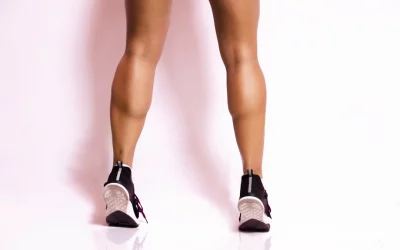What is Ballistic Stretching?
Ballistic stretching is a type of stretching that involves bouncing in a stretch to extend past your normal range of motion. Using force, athletes can extend muscles and tendons through a larger range of motion. This is one of the most dangerous types of stretching, as carries a higher risk of injury.
Normally, your muscles have sensors that alert your body when you are coming to your end range of motion. Ballistic stretching uses momentum to carry the muscles past these sensors, which can cause damage before your body is aware of what is happening.
Who uses ballistic stretches?
Ballistic stretching is used by high-end athletes, such as dancers, martial artists, and basketball players. This increases their flexibility and increases their range of motion, which can help with things like kicking or jumping higher. This post from On Pointe Wellness highlights that while ballistic stretching can be dangerous if a ballerina doesn’t gradually warm up with some of them, they are more likely to be injured when dancing, which often involves ballistic motions.
Non-athletes are advised against performing ballistic stretches. Everyday activities don’t need to put your muscles, joints, and tendons at risk with ballistic stretching.
Static stretching is the most recommended form of stretching, as it is gentler on your body, and carries less risk of injury since you are merely holding a stretch. Your body will alert you if you begin to push too far while stretching normally.
What is the difference between ballistic and dynamic stretching?
Dynamic (or active) stretching is where you use a continuous motion to stretch through a complete range of motion without holding the stretch. The difference between dynamic and ballistic stretching is that dynamic stretching does not push past your range of motion and prevents injuries instead of potentially causing them.
Examples of dynamic stretching would be stretches like doing arm circles or walking lunges. You are simply moving through your complete range of motion, not pushing past it.
While several of the stretches may be similar, the approach is what makes these techniques different.
Does WeStretch use ballistic stretching?
No, since WeStretch was designed to have stretches that everyone can do, there are no ballistic stretches in our routines. WeStretch is here to help you recover from your injuries, not add to them.
There are a handful of dynamic stretches, though, that allow you to move through your entire range of motion, such as circling your arms or swinging your leg back and forth.
Examples of ballistic stretching.
These ballistic stretch exercises are not recommended. These examples are just so that you can understand just exactly what ballistic stretching looks like. If you want to do the safe versions of these stretches, get into the basic position, slowly move deeper until you can feel the stretch, and refrain from bobbing around in the position. If you feel pain while stretching, stop immediately.
The butterfly stretch.
This is where you are seated on the ground, with the soles of your feet placed together and you bounce your knees up and down. While this may be tempting to try this to release tight hip flexors, performing it as a static stretch is safer for your body.
The toe toucher.
This happens either when you are standing or sitting and are trying to touch your toes. You start pulsing or bouncing to try to reach a little further, but your body isn’t prepared for the additional stretch. The extra tension is how you can pull, strain, or tear your muscles or tendons.
Arm flails.
When you see a child with too much energy, they are probably flailing their arms everywhere. They swing their arms back and forth, trying to clap their hands together in front of and behind them.
When you do this motion, however, there is a chance to pull different muscle groups, as this action is not within our normal range of motion.
Moving through these arm swings in a deliberate and controlled motion is a great form of dynamic stretching, though, since your body will give you signals when to stop moving. By swinging freely, however, is how you can push through those stopping points and cause damage.
Bouncing into the splits.
While being able to do the splits is a great achievement, you can cause great damage if you are sitting in them and slightly bouncing to go deeper. Instead, take your time with your splits, and make sure your muscles are adequately warmed up.
If you feel pain, stop immediately and allow your body to rest. The splits are not something you will gain overnight. (However, if you want to see how you can improve your splits in 30 days, check out this post!)
Ultimately, stretching should make your body feel better, not worse. Save ballistic stretching for the ballerinas and focus on the stretches that make you feel great. You will still improve your range of motion with static and dynamic stretches.
If you would like to learn what stretches feel best for your body, download the WeStretch app today and notice the difference!
Any links included are for reference, additional information, or entertainment value only, without monetary compensation. Contact us on social media or at [email protected]. Photos courtesy of Unsplash.
This article is not intended to act as or replace medical advice. Please talk to your healthcare practitioner if you have any concerns.
Written by Kayla Willsey
Updated June 30, 2021






